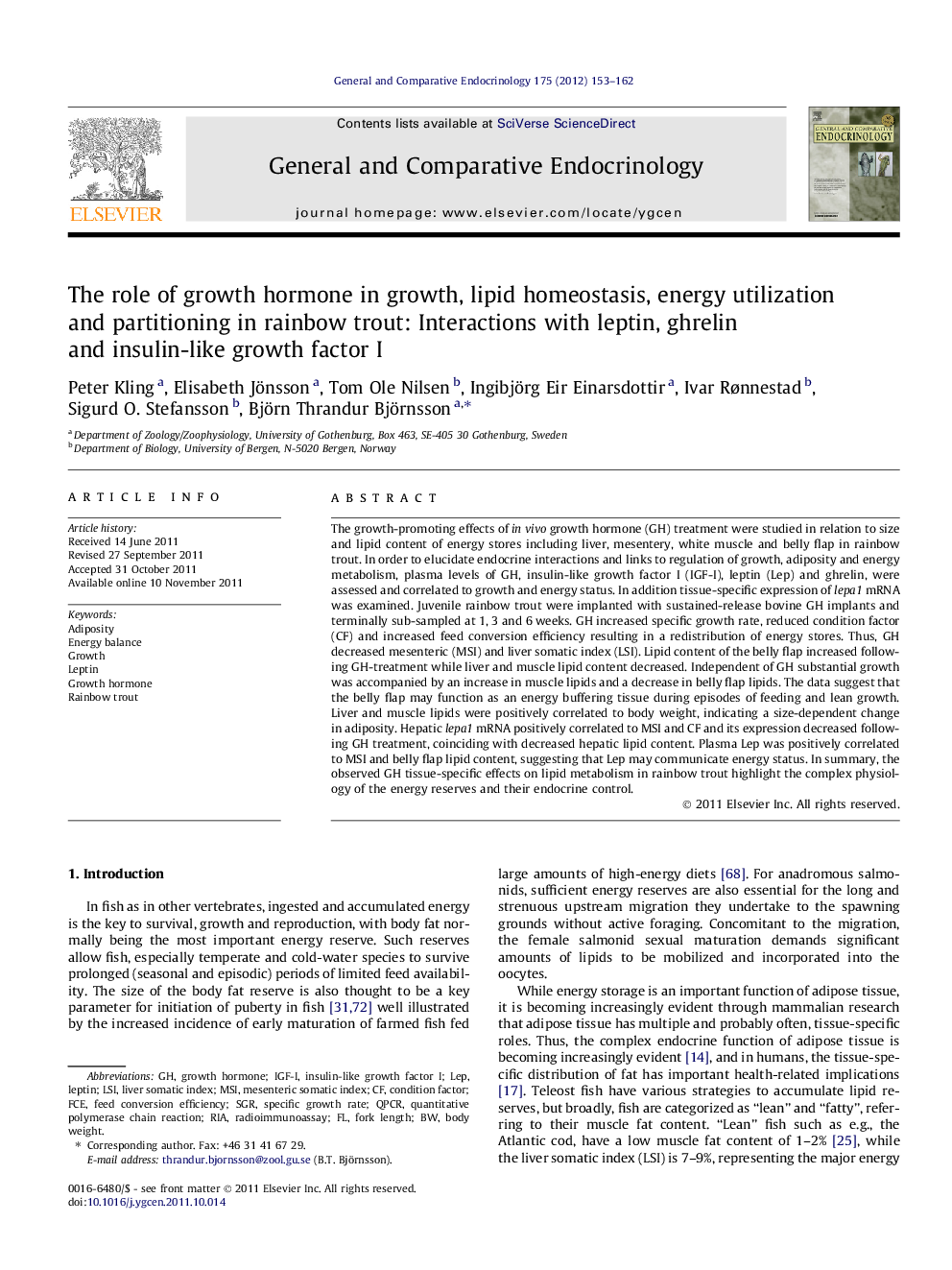| Article ID | Journal | Published Year | Pages | File Type |
|---|---|---|---|---|
| 2800674 | General and Comparative Endocrinology | 2012 | 10 Pages |
The growth-promoting effects of in vivo growth hormone (GH) treatment were studied in relation to size and lipid content of energy stores including liver, mesentery, white muscle and belly flap in rainbow trout. In order to elucidate endocrine interactions and links to regulation of growth, adiposity and energy metabolism, plasma levels of GH, insulin-like growth factor I (IGF-I), leptin (Lep) and ghrelin, were assessed and correlated to growth and energy status. In addition tissue-specific expression of lepa1 mRNA was examined. Juvenile rainbow trout were implanted with sustained-release bovine GH implants and terminally sub-sampled at 1, 3 and 6 weeks. GH increased specific growth rate, reduced condition factor (CF) and increased feed conversion efficiency resulting in a redistribution of energy stores. Thus, GH decreased mesenteric (MSI) and liver somatic index (LSI). Lipid content of the belly flap increased following GH-treatment while liver and muscle lipid content decreased. Independent of GH substantial growth was accompanied by an increase in muscle lipids and a decrease in belly flap lipids. The data suggest that the belly flap may function as an energy buffering tissue during episodes of feeding and lean growth. Liver and muscle lipids were positively correlated to body weight, indicating a size-dependent change in adiposity. Hepatic lepa1 mRNA positively correlated to MSI and CF and its expression decreased following GH treatment, coinciding with decreased hepatic lipid content. Plasma Lep was positively correlated to MSI and belly flap lipid content, suggesting that Lep may communicate energy status. In summary, the observed GH tissue-specific effects on lipid metabolism in rainbow trout highlight the complex physiology of the energy reserves and their endocrine control.
► GH treatment leads to in tissue-specific redistribution of energy stores. ► GH treatment decreases lipid content in mesentery, white muscle and liver. ► GH treatment decreases hepatic lepa1 mRNA expression. ► Plasma Lep and hepatic lepa1 mRNA correlates positively to energy stores.
